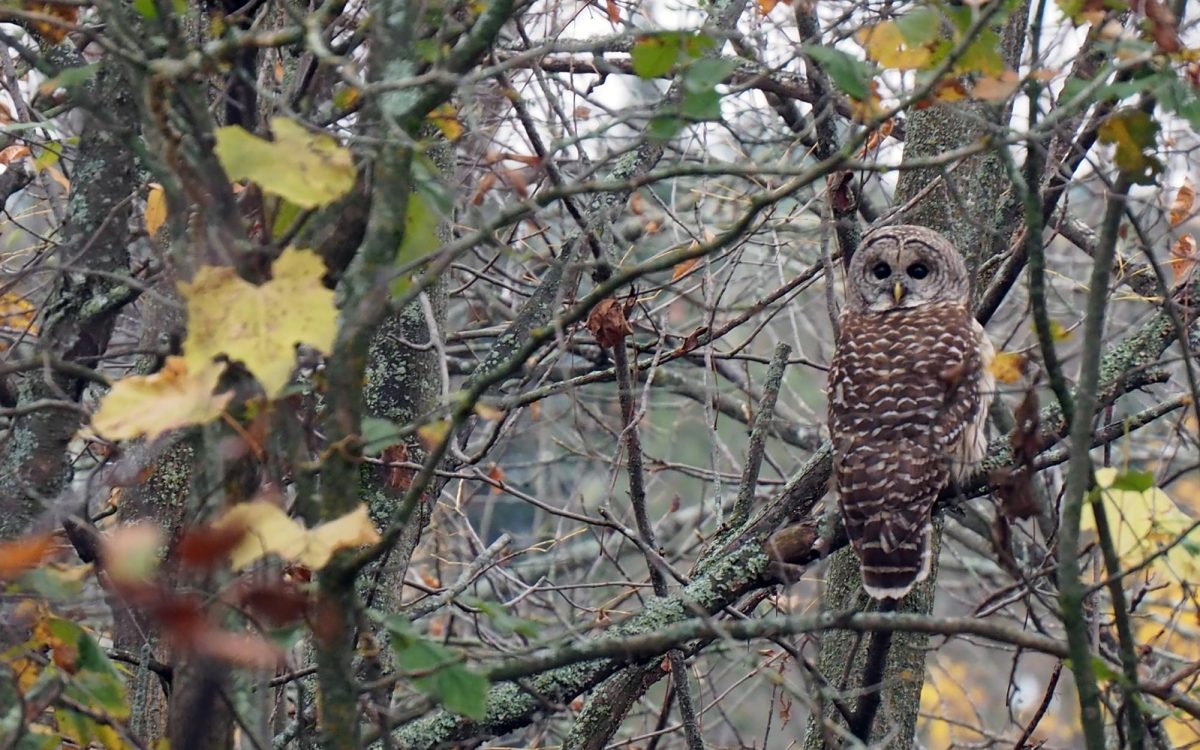Dear EarthTalk: How is the northern spotted owl, the once-endangered poster bird for old growth forest conservation in the Pacific Northwest, doing these days? — P. J., Seattle
Distinguished by dark-brown white-speckled feathers, the northern spotted owl was the symbol of conservation in the Pacific Northwest in the 1990s. This period saw scientists and conservationists rallying against the rapid destruction of old-growth forests that the owl relied upon for survival.
In 1990, the U.S. government listed the species as “threatened” under the Endangered Species Act, leading to the establishment of “critical habitat” areas. Despite these measures, deforestation and resulting habitat loss have been shrinking the bird’s population by about 2.9% annually. In British Columbia, where these owls also once thrived, more than 97% of the old-growth forests are now gone. And the increase in forest fires, worsened by rising global temperatures, has further reduced the shrinking habitat.
 Furthermore, the emergence of an invasive species, the barred owl, has pushed the northern spotted owls to the brink of extinction. Historically inhabiting East Coast forests, barred owls have expanded their range westward in the past 50 years, enabled by habitat changes, human activity and climate change.
Furthermore, the emergence of an invasive species, the barred owl, has pushed the northern spotted owls to the brink of extinction. Historically inhabiting East Coast forests, barred owls have expanded their range westward in the past 50 years, enabled by habitat changes, human activity and climate change.
Barred owls are generalists, consuming a variety of food ranging from small mammals to reptiles and even other birds. In contrast, northern spotted owls are specialized, predominantly relying on small mammals, particularly flying squirrels and woodrats. Northern spotted owl pairs typically do not breed annually. When they do reproduce, they only lay one to two eggs and use large amounts of resources to invest in their roles as parents. The presence of barred owls has prompted northern spotted owls to disperse from their preferred breeding territories, impacting their already limited reproductive habits.
Beyond protections against logging, northern spotted owls would benefit from the prohibition of pesticides in areas surrounding their habitat. Recent studies in Washington, Oregon, California forests showed a presence of anticoagulant rodenticides (ARs). This raises concerns about the northern spotted owls due to their rodent-heavy diets. Though some raise concerns over the ethics of lethally removing barred owls, studies show that the resulting reduction of competition for resources would help northern spotted owls’ adult survival rates, breeding attempts and reproductive viability.
Efforts to increase the wild northern spotted owl population have been attempted with limited success. A Canadian program spent over 15 years diligently incubating eggs and hand-rearing chicks. In August 2022, the program released three captive-born male owls into a forest. However, by May 2023, two had died and another had been hit by a train and put into rehabilitation. Despite these disappointing results, scientists continue to improve their practices by studying other species of owls.
The northern spotted owl faces a web of challenges from habitat loss to invasive species, but ongoing conservation efforts underscore a collective commitment to securing their survival.
Column written by Roddy Scheer and Doug Moss. EarthTalk is produced by Roddy Scheer and Doug Moss for the 501(c)3 nonprofit EarthTalk. See more at emagazine.com. To donate, visit earthtalk.org. Send questions to question@earthtalk.org.
Columns represent the views of the individual writer and do not necessarily reflect those of the North Coast Current’s ownership or management.



